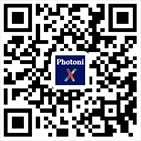| [1] |
Calvanese Strinati E, Barbarossa S, Gonzalez-Jimenez JL, Ktenas D, Cassiau N, Maret L, et al. 6G: the next frontier: from holographic messaging to artificial intelligence using subterahertz and visible light communication. IEEE Veh Technol Mag. 2019;14(3):42–50. https://doi.org/10.1109/MVT.2019.2921162.
|
| [2] |
Chi N, Zhou Y, Wei Y, Hu F. Visible light communication in 6G: advances, challenges, and prospects. IEEE Veh Technol Mag. 2020;15(4):93–102. https://doi.org/10.1109/MVT.2020.3017153.
|
| [3] |
Chi N, Zhou Y, Liang S, Wang F, Li J, Wang Y. Enabling Technologies for High-Speed Visible Light Communication Employing CAP modulation. J Lightwave Technol. 2018;36(2):510–8. https://doi.org/10.1109/JLT.2017.2783906.
|
| [4] |
Chi N, Haas H, Kavehrad M, Little TDC, Huang X. Visible light communications: demand factors, benefits and opportunities [guest editorial]. IEEE Wirel Commun. 2015;22(2):5–7. https://doi.org/10.1109/MWC.2015.7096278.
|
| [5] |
De Vries JP, Simić L, Achtzehn A, Petrova M, Mähönen P. The Wi-fi “congestion crisis”: regulatory criteria for assessing spectrum congestion claims. Telecommun Policy. 2014;38(8–9):838–50. https://doi.org/10.1016/j.telpol.2014.06.005.
|
| [6] |
Wang Y, Wang Y, Chi N, Yu J, Shang H. Demonstration of 575-Mb/s downlink and 225-Mb/s uplink bi-directional SCM-WDM visible light communication using RGB LED and phosphor-based LED. Opt Express. 2013;21(1):1203–8. https://doi.org/10.1364/OE.21.001203.
|
| [7] |
Huang X, Wang Z, Shi J, Wang Y, Chi N. 1.6 Gbit/s phosphorescent white LED based VLC transmission using a cascaded pre-equalization circuit and a differential outputs PIN receiver. Opt Express. 2015;23(17):22034–42. https://doi.org/10.1364/OE.23.022034.
|
| [8] |
Bian R, Tavakkolnia I, Haas H. 15.73 Gb/s visible light communication with off-the-shelf LEDs. J Lightwave Technol. 2019;37(10):2418–24. https://doi.org/10.1109/JLT.2019.2906464.
|
| [9] |
Zhou Y, Zhu X, Hu F, Shi J, Wang F, Zou P, et al. Common-anode LED on a Si substrate for beyond 15 Gbit/s underwater visible light communication. Photonics Res. 2019;7(9):1019–29. https://doi.org/10.1364/PRJ.7.001019.
|
| [10] |
Shin H, Jeon K, Jang Y, Gang M, Choi M, Park W, et al. Comparison of the microstructural characterizations of GaN layers grown on Si (111) and on sapphire. J Korean Phys Soc. 2013;63(8):1621–4. https://doi.org/10.3938/jkps.63.1621.
|
| [11] |
Härle V, Hahn B, Lugauer H J, et al. GaN based LEDs and lasers on SiC[J]. Phys Status Solidi A. 2000;180(1):5–13.
|
| [12] |
Xiong C, Jiang F, Fang W, Wang L, Liu H, Mo C. Different properties of GaN-based LED grown on Si (111) and transferred onto new substrate. Sci China Series E. 2006;49(3):313–21. https://doi.org/10.1007/s11431-006-0313-1.
|
| [13] |
Wong WS, Sands T, Cheung NW, Kneissl M, Bour DP, Mei P, et al. Fabrication of thin-film InGaN light-emitting diode membranes by laser lift-off. Appl Phys Lett. 1999;75(10):1360–2. https://doi.org/10.1063/1.124693.
|
| [14] |
Ryu HY, Jeon KS, Kang MG, Yuh HK, Choi YH, Lee JS. A comparative study of efficiency droop and internal electric field for InGaN blue lighting-emitting diodes on silicon and sapphire substrates. Sci Rep. 2017;7(1):44814. https://doi.org/10.1038/srep44814.
|
| [15] |
Dadgar A, Poschenrieder M, Bläsing J, Fehse K, Diez A, Krost A. Thick, crack-free blue light-emitting diodes on Si (111) using low-temperature AlN interlayers andin situSixNy masking. Appl Phys Lett. 2002;80(20):3670–2. https://doi.org/10.1063/1.1479455.
|
| [16] |
Cheng K, Leys M, Degroote S, van Daele B, Boeykens S, Derluyn J, et al. Flat GaN epitaxial layers grown on Si (111) by metalorganic vapor phase epitaxy using step-graded AlGaN intermediate layers. J Electron Mater. 2006;35(4):592–8. https://doi.org/10.1007/s11664-006-0105-1.
|
| [17] |
Zamir S, Meyler B, Salzman J. Thermal microcrack distribution control in GaN layers on Si substrates by lateral confined epitaxy. Appl Phys Lett. 2001;78(3):288–90. https://doi.org/10.1063/1.1338968.
|
| [18] |
Liu J, Feng F, Zhou Y, Zhang J, Jiang F. Stability of Al/Ti/au contacts to N-polar n-GaN of GaN based vertical light emitting diode on silicon substrate. Appl Phys Lett. 2011;99(11):111112. https://doi.org/10.1063/1.3640229.
|
| [19] |
Quan ZJ, Liu JL, Fang F, Wang GX, Jiang FY. A new interpretation for performance improvement of high-efficiency vertical blue light-emitting diodes by InGaN/GaN superlattices. J Appl Phys. 2015;118(19):6.
|
| [20] |
Tao X, Liu J, Zhang J, Mo C, Xu L, Ding J, et al. Performance enhancement of yellow InGaN-based multiple-quantum-well light-emitting diodes grown on Si substrates by optimizing the InGaN/GaN superlattice interlayer. Opt Mater Express. 2018;8(5):1221–30. https://doi.org/10.1364/OME.8.001221.
|
| [21] |
Mo C, Fang W, Pu Y, Liu H, Jiang F. Growth and characterization of InGaN blue LED structure on Si (111) by MOCVD. J Cryst Growth. 2005;285(3):312–7. https://doi.org/10.1016/j.jcrysgro.2005.08.046.
|
| [22] |
Liu L, Wang L, Li D, Liu N, Li L, Cao W, et al. Influence of indium composition in the prestrained InGaN interlayer on the strain relaxation of InGaN/GaN multiple quantum wells in laser diode structures. J Appl Phys. 2011;109(7):073106. https://doi.org/10.1063/1.3569848.
|
| [23] |
Jiang F, Wang L, Fang W. Semiconductor light-emitting device and method for making same: U.S. Patent 7, 919, 784[P]. 2011.
|
| [24] |
Huang X, Shi J, Li J, Wang Y, Chi N. A Gb/s VLC transmission using hardware Preequalization circuit. IEEE Photon Technol Lett. 2015;27(18):1915–8. https://doi.org/10.1109/LPT.2015.2445781.
|
| [25] |
Inan B, Jeffrey Lee SC, Randel S, Neokosmidis I, Koonen AMJ, Walewski JW. Impact of LED nonlinearity on discrete multitone modulation. J Opt Commun Netw. 2009;1(5):439–51. https://doi.org/10.1364/JOCN.1.000439.
|
| [26] |
Shafik RA, Rahman MS, Islam AHMR, Ieee. On the extended relationships among EVM, BER and SNR as performance metrics. In: Icece 2006: Proceedings of the 4th International Conference on Electrical and Computer Engineering; 2006. p. 408–+.
|
| [27] |
Levin HE. A complete and optimal data allocation method for practical discrete multitone systems. In: GLOBECOM'01. IEEE Global Telecommunications Conference (Cat. No.01CH37270); 2001.
|
| [28] |
Campello J. Optimal discrete bit loading for multicarrier modulation systems. In: Proceedings. 1998 IEEE International Symposium on Information Theory (Cat. No.98CH36252); 1998.
|
| [29] |
Chen M, He J, Tang J, Chen L. Pilot-aided sampling frequency offset estimation and compensation using DSP technique in DD-OOFDM systems. Opt Fiber Technol. 2014;20(3):268–73. https://doi.org/10.1016/j.yofte.2014.02.011.
|
| [30] |
Hussain B, Li X, Che F. Yue C P, and Wu L, visible light communication system design and link budget analysis. J Lightwave Technol. 2015;33(24):5201–9. https://doi.org/10.1109/JLT.2015.2499204.
|
| [31] |
Schubert EF, Gessmann T, Kim JK. Light emitting diodes. In: Kirk-Othmer Encyclopedia of Chemical Technology; 2000.
|
| [32] |
Windisch R, Knobloch A, Kuijk M, Rooman C, Dutta B, Kiesel P, et al. Large-signal-modulation of high-efficiency light-emitting diodes for optical communication. IEEE J Quantum Electron. 2000;36(12):1445–53. https://doi.org/10.1109/3.892565.
|
| [33] |
Piprek J. Efficiency droop in nitride-based light-emitting diodes. Phys Status Solidi (a). 2010;207(10):2217–25.
|
| [34] |
Kuritzky LY, Espenlaub AC, Yonkee BP, Pynn CD, DenBaars SP, Nakamura S, et al. High wall-plug efficiency blue III-nitride LEDs designed for low current density operation. Opt Express. 2017;25(24):30696–707. https://doi.org/10.1364/OE.25.030696.
|
 点击查看大图
点击查看大图








 下载:
下载:

